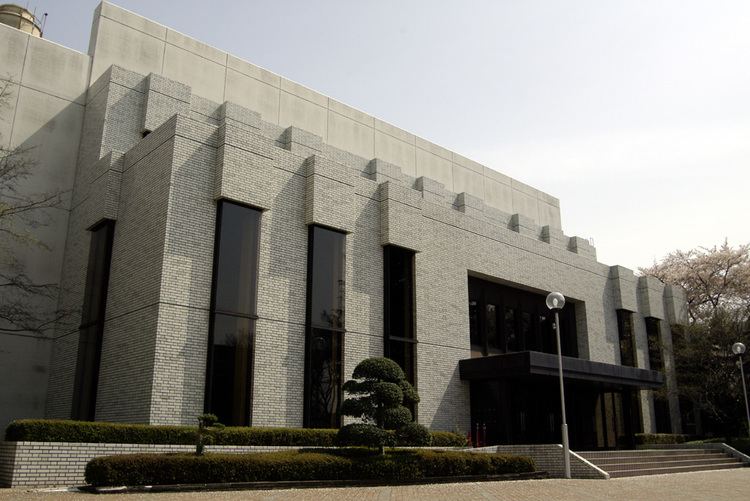Type National Administrative staff 250 Phone +81 42-443-5000 Founded 1949 Undergraduates 3,800 | President Takashi Fukuda Postgraduates 1500 Acceptance rate 23% (2014) Total enrollment 4,982 (1 May 2014) Color (DIC-256) | |
 | ||
Established 1945 - The Central Technical Institute for Wireless-Communications1918 - The Technical Institute for Wireless-Communications Notable alumni Koichi Nakamura, Ken Kutaragi, Sumio Iijima Similar Tokyo University of Agricult, Tokyo Institute of Technology, Tokyo Metropolitan University, Tokyo University of Science, Tokyo Denki University | ||
University of electro communications tokyo japan optimal optical science
The University of Electro-Communications (電気通信大学, Denki-Tsūshin Daigaku) is a national university in the city of Chōfu, Tokyo, Japan. It specialises in the disciplines of computer science, the physical sciences, engineering and technology. It was founded in 1918 as the Technical Institute for Wireless-Communications [1].
Contents
- University of electro communications tokyo japan optimal optical science
- University of electro communications chofu tokyo
- History
- School symbol
- Faculties
- Graduate schools
- Centers for Education and Research
- Notable faculty
- Businesspersons
- Scholars and Researchers
- Others
- References
University of electro communications chofu tokyo
History
The University of Electro-communications was founded in the Azabu district, Tokyo city as the Technical Institute for Wireless-Communications by Wireless Association in 1918. The Technical Institute for Wireless-Communications was transferred to the Ministry of Communications in 1942 and renamed to the Central Technical Institute for Wireless-Communications in 1945. Following to the transfer from the Ministry of Communications to the Ministry of Education in 1948, the University of Electro-communications was established as a national university in 1949. The campus was moved to the city of Chōfu, Tokyo in 1957. The university has been run by the National University Corporation since 2004.
School symbol
The school symbol has a long history [2]. The student union picked up the topic and discussed it with the University in the year when it obtained university status (1949). Based on the approval from the faculty council in September 1949, a prize competition was held targeting at students and employees. As a result, the design of a Lissajous figure of the frequency ratio of 5 to 6 with Chinese characters meaning "University", submitted by Professor Sadao Matsumura (who later became the fourth President, serving from 3 October 1967 to 28 February 1969), won the competition, and the prize money of 2,000 yen (amount at that time) was given to him. The frequency ratio of 5 to 6 corresponds to the commercial power frequencies of 50 Hz in eastern Japan and 60 Hz in western Japan, and was selected for its meaning of Japan-wide harmonisation. Therefore, the Lissajous figure university symbol can be said to represent the ethos of foundation of the University, that is "to establish a university which is open to all over Japan, by call it by a name without any geographical name, the University of ElectroCommunications".
